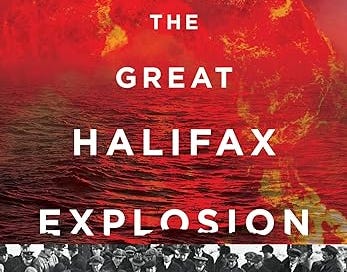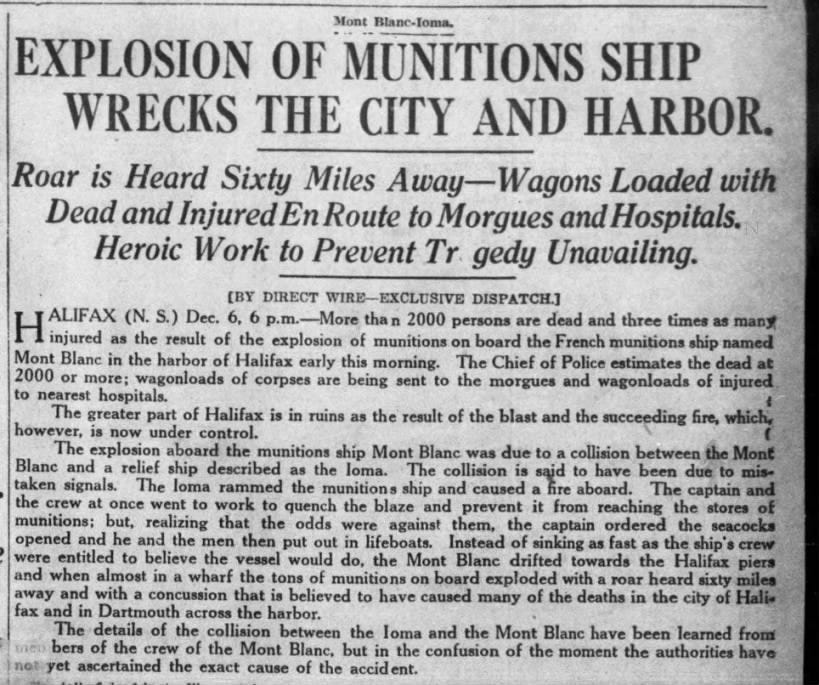“Bacon has rescued from obscurity an astonishing episode of horror and heroism.” - George Will
John Bacon’s The Great Halifax Explosion (Wm. Morrow Pub., 2018) is a fast-paced and thoroughly-researched account of an oft-forgotten story - and a real “page-turner,” as they say.
It’s the story of the Mont Blanc, a over-burdened munitions-laden ship that left New York bound for Europe to supply the troops during the Great War, and the multiple human errors, poor decision-making, and elements of chance that led to its collision with the Imo - a collision that resulted in its explosion in Halifax Harbor in 1917.
It’s also the story of heroism that followed in the aftermath - a tale of humanity at its best. In Chapter 30, “A Working Sabbath,” Bacon details how two days after the December 4 explosion, “ordinary people rose to perform acts of generosity and creativity” to aid in “the herculean task” of comforting the 9,000 surviving victims.
But the reality was grim; nearly 2,000 had died. Recovering the bodies and identifying the victims was difficult both logistically and emotionally. Bacon describes how “soldiers and sailors combed the area looking for corpses,” but he goes a step further, in an example of his meticulous research, he details the extent to which efforts were made - and how it was done - to identify the religious faith of each victim to guarantee the appropriate burial rite as well as place of interment.
A mass funeral was scheduled for December 17. “Three thousand mourners gathered … they needed a funeral to gather as a community and pay their respects to the dead.”
The Protestant service was held first, then the Catholic Mass. Soldiers then lifted the caskets into large trucks - the Protestant victims to Fairview Cemetery (where many of the Titanic victims are buried) and the Catholic remains to Mount Olivet. Both caravans were preceded by a band playing “The Dead March in Saul.”
The following day the Halifax Morning Chronicle reported, “No such procession had ever trod the streets of this city, and the prayer of all people here, of all creeds, and no creed, must be ‘God grant so sad a sight may never be be witnessed here again.’”
Bacon describes in detail how Canadiens and Americans, particularly Bostonians, came to aid and assist the recovery and rebuilding effort; and he concludes with the criminal inquiry and trial that followed the blame-game played by the mariners involved.
Ultimately, the book is about humanity - with a threefold emphasis: the imperfection of man, the power of the human spirit, and dignity of the human person. Bacon’s writing style brings the story to life in a way that allows readers to enter the many scenes he animates.





